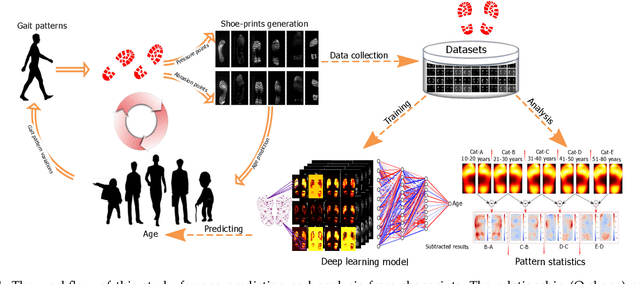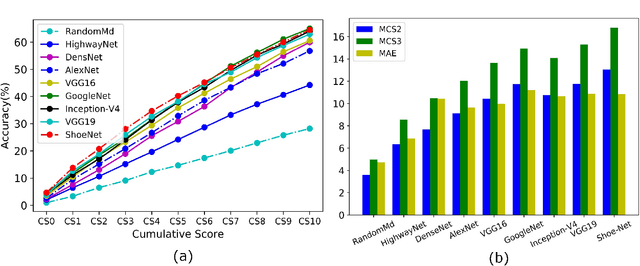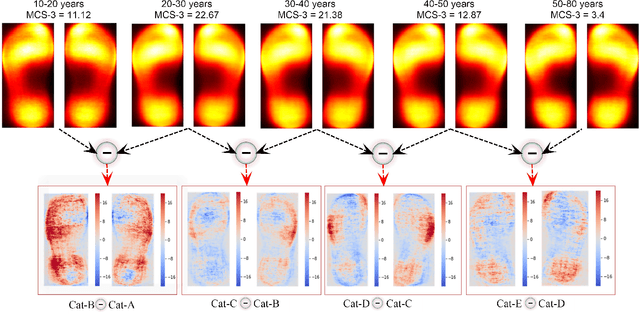Deep Learning Analysis and Age Prediction from Shoeprints
Paper and Code
Nov 07, 2020



Human walking and gaits involve several complex body parts and are influenced by personality, mood, social and cultural traits, and aging. These factors are reflected in shoeprints, which in turn can be used to predict age, a problem not systematically addressed using any computational approach. We collected 100,000 shoeprints of subjects ranging from 7 to 80 years old and used the data to develop a deep learning end-to-end model ShoeNet to analyze age-related patterns and predict age. The model integrates various convolutional neural network models together using a skip mechanism to extract age-related features, especially in pressure and abrasion regions from pair-wise shoeprints. The results show that 40.23% of the subjects had prediction errors within 5-years of age and the prediction accuracy for gender classification reached 86.07%. Interestingly, the age-related features mostly reside in the asymmetric differences between left and right shoeprints. The analysis also reveals interesting age-related and gender-related patterns in the pressure distributions on shoeprints; in particular, the pressure forces spread from the middle of the toe toward outside regions over age with gender-specific variations on heel regions. Such statistics provide insight into new methods for forensic investigations, medical studies of gait-pattern disorders, biometrics, and sport studies.
 Add to Chrome
Add to Chrome Add to Firefox
Add to Firefox Add to Edge
Add to Edge